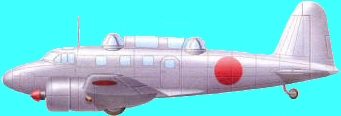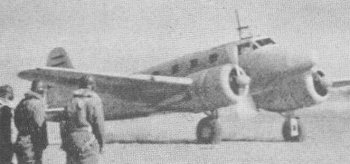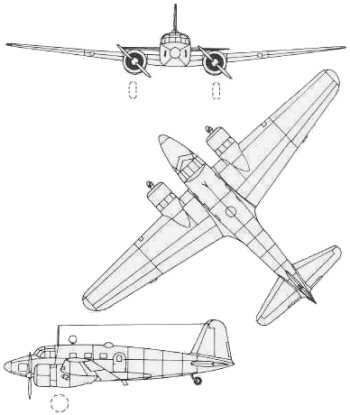Tachikawa Ki.54 Type 1 ("Hickory")






A total of 1,368 Tachikawa Ki-54s were built between 1940 and 1945. They were used as crew-training planes and for light transport. Known as "Hickory" in the Allied code, this small two-engine plane was produced in several versions, including an anti-submarine patrol model. The Ki-45 was completed in prototype in the summer of 1940 and went into production the next year as an advanced army trainer. The Ki-54b was used to train all kinds of crew members, including pilots, bombers, gunners, navigators, and radio operators. Another variant was the Ki-54c, which was assigned to light transport and communications duties. Prototypes of all-wood versions and a fuel tanker version (Ki-110, Ki-114, Ki-111) were not completed before the war's end.
Tachikawa Ki.54 Type 1
Type: Crew Trainer (Ki-54a & Ki-54b)
Light Transport (Ki-54c, Ki-110, Ki-111, Ki-114)
Anti-submarine Patrol aircraft (Ki-54d)
Service: Japanese Army Air Force (JAAF)
Crew: crew of 5-9, or crew of 2 with 8 passengers
Armament: four flexible 7.7mm Type 89 machine guns (Ki-54b)
or 1058 lbs of depth charges (Ki-54d)
Reference: Francillon: 254
Specifications:
Length: 39' 2" (11.94 m)
Height: 11' 8.9" (3.58 m)
Wingspan: 58' 8.6" (17.9 m)
Wing area: 43.555 sq. ft (40 sq. m)
Empty Weight: 6512 lbs (2954 kg)
Loaded Weight: 8591 lbs (3897 kg)
Propulsion:
No. of Engines: 2
Powerplant: Hitachi Ha-13a 9-cylinder radial engine
Horsepower: 450 hp each
Performance:
Range (max): 597 miles (960 km)
Cruise Speed: 149 mph (240 km/h)
Max Speed: 234 mph (376 km/h) at 6560 ft (2000 m)
Climb to/in: 16,405 ft (5000 m) in 20 min 18 sec
Ceiling: 22,555 ft (7180 m)
Production: 1368 Ki-54s total
Additional information on this aircraft can be found at Wikipedia
HERE.
For several very nice scale color drawings of this aircraft, see
here
(4 versions available on left).
Additional color schemes for this aircraft can be found here.
If you don't see the table of contents at the left of your screen, CLICK HERE to see the rest of this website!